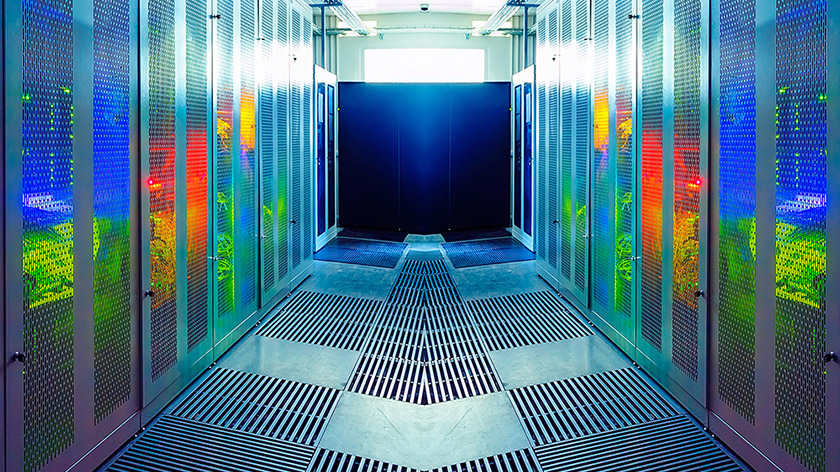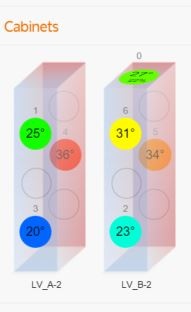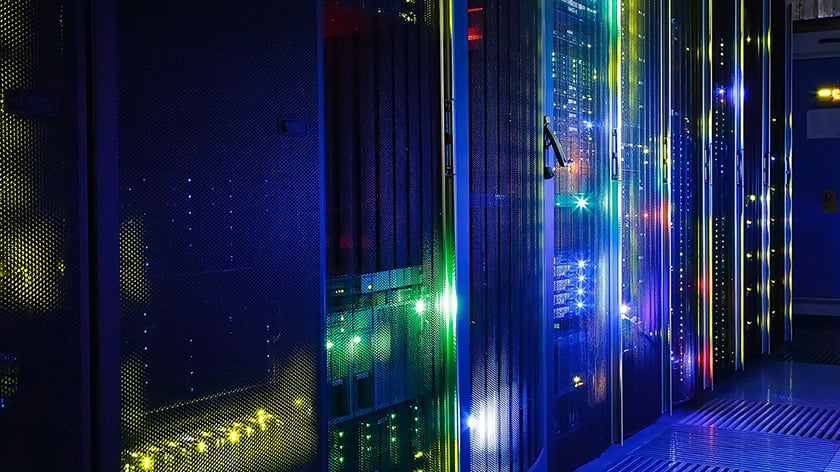Using Temperature Sensor Data to Drive Business Decisions [VIDEO]
To make the best business decisions around temperature and energy use, you need to have the data points. Advances in sensors and wireless technology...
3 min read
![]() Packet Power Team
:
Aug 25, 2021 3:00:00 PM
Packet Power Team
:
Aug 25, 2021 3:00:00 PM

Hot spots in a data center must be closely monitored: let the warmest areas in your facility get too warm and you risk degraded performance, outages, and potential equipment damage. Yet they can also drive how much you spend to cool your entire data center. The key is to find them, monitor them, and manage them.
Hot spots are usually caused when certain cabinets are more heavily loaded than is typical or the facility has areas where cooling is ineffective. Airflow management strategies that separate hot and cold aisles are considered a best practice in data center management since they allow you to more efficiently run your HVAC systems, but even facilities with effective containment systems can experience hot spots.
 Walking around the data center may feel like the easiest way to find hot spots, but it is the least effective. You will probably notice an extreme hot spot. But what if you don’t happen to walk by the problem at area at the right time? And walking around is not effective in detecting less obvious temperature fluctuations, especially increases or decreases that occur slowly and worsen over time. Containment systems can make this more difficult. Overall, it is not an effective use of staff time.
Walking around the data center may feel like the easiest way to find hot spots, but it is the least effective. You will probably notice an extreme hot spot. But what if you don’t happen to walk by the problem at area at the right time? And walking around is not effective in detecting less obvious temperature fluctuations, especially increases or decreases that occur slowly and worsen over time. Containment systems can make this more difficult. Overall, it is not an effective use of staff time.
A hand-held meter (temperature gun, strips, or a forward-looking infrared device) that takes manual readings at computer rack front doors, server intake points and exhaust vents can replace relying on the ability to sense temperature differences. It is more effective than subjectively sensing changes during a walk by, but it still requires someone making the time to walk through all the potential problem areas on a regular basis. The readings also need to be captured and analyzed to spot problematic trends or identify issues occurring at specific times or near specific equipment.
Automated temperature monitoring systems are most effective because they are precise, provide real-time data as well as historical data for trending, don’t require dedicated staff to capture the data, and can deliver alerts when readings are outside desired ranges. You don’t have to physically take temperature readings to get the information you need. You eliminate inaccurate findings that can occur if data center personnel take readings in the wrong locations. And you can review your data in easy-to-share reports and use it to increase efficiency and demonstrate compliance with service level agreement commitments.
Packet Power temperature monitors allow you to customize rack monitoring cabinet by cabinet, varying the number of monitoring points as needed for your space, from a few monitoring points per row to up to 12 monitoring points per cabinet. Our wireless environmental monitors are portable, easy to use, and their compact form factor enables installation in tight spaces. The system can alert you to anomalies, so you can respond faster and avert serious problems.
When you find hot spots, there are actions you can take immediately to reduce the temperature. These actions should be considered strictly temporary as they don’t address the underlying cause of the hot spot and they’ll increase cooling costs:
Don’t assume the solution to managing hot spots is increasing cooling capacity, because that won’t address bypass or recirculation issues, which are the two most common causes of hot spots. You need an overall airflow management strategy that considers airflow in each rack as well as throughout the computer room. You may need to relocate problem loads or the computer room thermostats.
![Using Temperature Sensor Data to Drive Business Decisions [VIDEO]](https://www.packetpower.com/hubfs/Blog/using%20temp%20sensors.jpg)
To make the best business decisions around temperature and energy use, you need to have the data points. Advances in sensors and wireless technology...

When your existing monitoring devices are not keeping up with new demands, it’s time for a change. But upgrading monitors in a facility can be...

Data centers must meet constantly evolving needs. Trends such as increasing power density, cloud computing, edge computing, and data analytics...